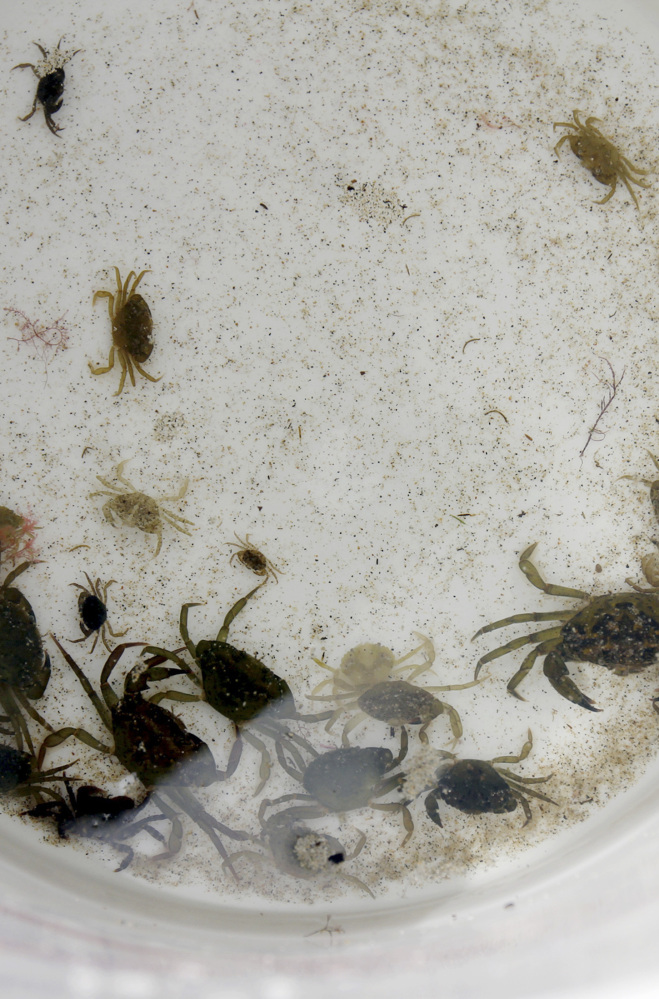ESSEX, Mass. — The soft-shelled backbone of this town’s economy is under attack from an old enemy, with invasive species of crabs gobbling up clams throughout Essex Bay, experts say.
There may be two invasive species threatening the deep-fried favorite of Essex, the European green crabs and the Asian shore crabs. But Essex Shellfish Constable Billie Knovack says there is especially an uptick in European green crabs in Essex, and that means fewer for clammers to reel in.
“We have a green crab invasion,” he said earlier this month.
Usually, Knovack said, winter kills off the crab population. But warmer waters and warmer weather means more time for the crabs to hunt Essex’s soft-shelled clams.
“It’s a much more opportune environment,” he said. “If you’re a crab, this is beautiful weather,” he said in 40-degree temperatures at the town landing earlier this month.
Knovack said there are no hard numbers as to the amount of European green crabs in the Essex River or Essex Bay, but the clams are disappearing. About two to three years ago, commercial clammers were meeting their annual 250-pound clam quota; now, clammers are catching about 150 pounds each annually, he said.
This threat is nothing new. The clam-hunting crab arrived on American shores in the 1880s said Alan Young, who holds a doctorate in biology and teaches at Salem State University.
While the green crab is the classic predator of shellfish and invertebrates, the Asian shore crab may also pose a threat to the seafood industry in Essex and beyond.
Young notes that the first appearance of the relatively new invasive species was in 1988, but it is now found up and down the East Coast.
“It is very successful as an invasive species, at least partly because its reproductive rate is very high,” Young wrote in an email. “A single female can produce 50,000 eggs three to four times during the summer, whereas native crabs reproduce only twice each season.”
Asian Shore Crabs also feed on juvenile clams and other invertebrates, but pose less of a threat than the European green crab because the shore crab generally hunts in places where clams are absent anyway, Young wrote.
Young is in the middle of a yearlong European green crab population survey near Salem Sound. Each month, Young and his team deploy a crab trap for one week in six locations, from Marblehead to Danvers; from there, they measure the size and determine the sex and color of each crab.
Young wrote that it’s still too early to tell if there are increasing numbers of green crabs in the area, but he has heard that the crabs are more prevalent in Maine.
On a state level, there is evidence of the European green crab making more of an impact, according to Mike Hickey, the shellfish program manager with the state Division of Marine Fisheries.
“Hard, cold winters usually knock the population down,” he said, adding that the state is in the midst of collecting information from shellfish constables around the state. Hickey said the project came at the request of Maine officials, who are holding a summit on the issue in the coming weeks.
Young – who plans on attending the Maine clam summit – said the conference will address the concerns and options for dealing with the European green crab.
Copy the Story LinkSend questions/comments to the editors.



Success. Please wait for the page to reload. If the page does not reload within 5 seconds, please refresh the page.
Enter your email and password to access comments.
Hi, to comment on stories you must . This profile is in addition to your subscription and website login.
Already have a commenting profile? .
Invalid username/password.
Please check your email to confirm and complete your registration.
Only subscribers are eligible to post comments. Please subscribe or login first for digital access. Here’s why.
Use the form below to reset your password. When you've submitted your account email, we will send an email with a reset code.